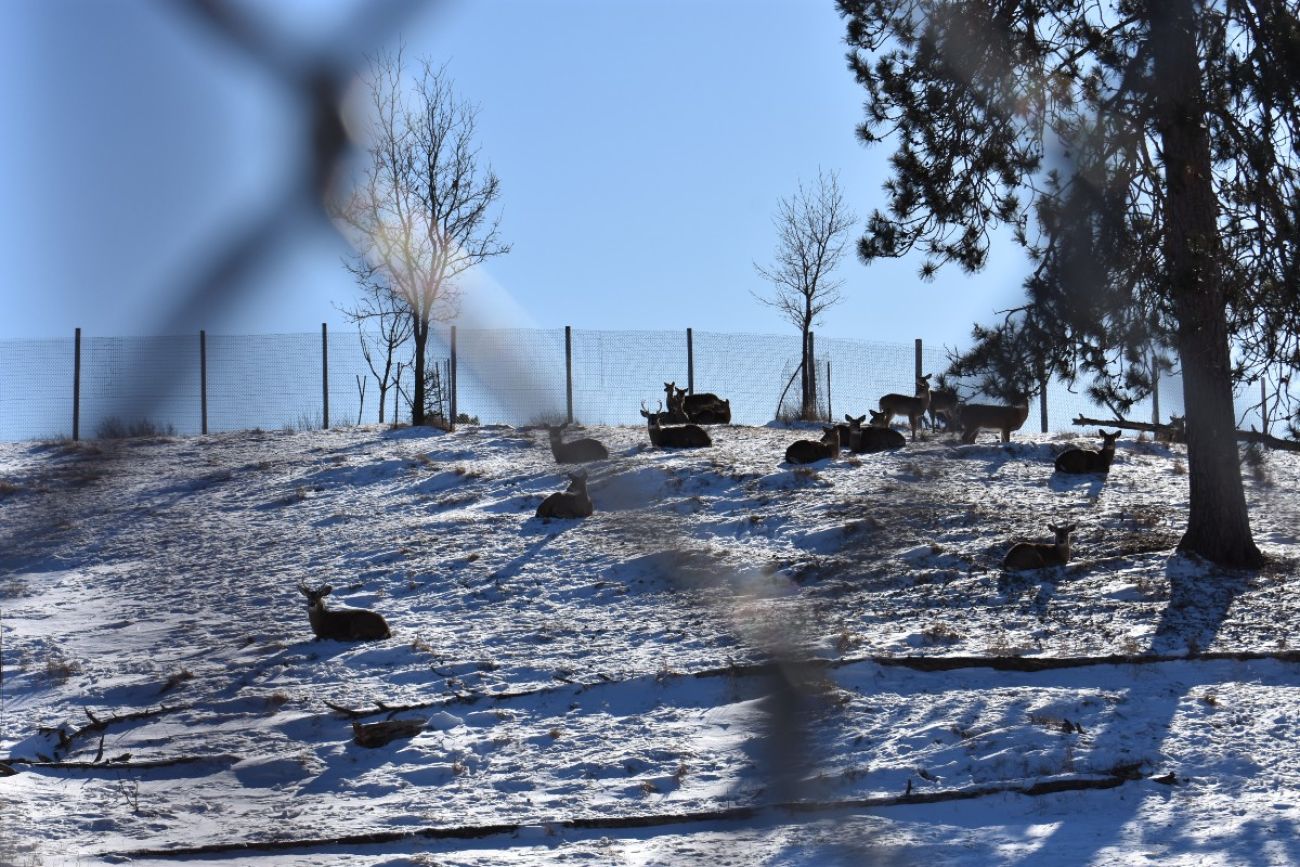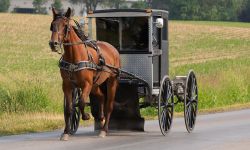Iron Mountain eyes novel plan to cut iconic deer park: castration

- Iron Mountain considers closing its deer attraction and castrating bucks to let the herd die off naturally
- No one knows exactly how long the city’s had a deer pen in its city park, but records date back to the 1940s
- Because of the type of state licensing the city has for the enclosure, the animals can’t be moved or released
IRON MOUNTAIN — A day at a city park might include lunch at the pavilion or letting Fido run in the dog park while your kids play on the playground.
In Iron Mountain, it could also include watching two dozen whitetails up close at the park’s nearly 6-acre deer enclosure.
Though maybe not forever.
The city is considering castrating the nine bucks in the enclosure, letting the herd die off naturally over the next several years and eventually closing the deer attraction that’s been part of the city since at least the 1940s.
A novelty when it opened, the city’s deer attraction has lost some of its luster as wild deer herds have grown and now regularly run through people’s yards. It can also be difficult to maintain the enclosure as bucks rub and ruin trees that provide shelter and shade for the animals. Some residents dislike the animals’ living conditions.
Iron Mountain resident Emily Cummings, who grew up in the city and has lived there most of her life, remembers her mother taking her to the park to feed the deer overripe apples or cut-up pumpkins from Halloween.
“Even as a kid, I would say to my mom, ‘Are they going to be warm in the winter?,’ and I would want to give them coats and boots and gloves,” Cummings told Bridge Michigan on Friday. “We have so many deer in our area already. It’s not hard to see them. So I do think it’s a sad life, looking at it as an adult, for them to be stuck in a fence.”
The city can’t move or release the deer alive because of the type of state licensing it has for the enclosure, said Sarah Cummins, policy and regulations unit manager for the Michigan Department of Natural Resources’ Wildlife Division.
Related:
- Report warns fatal deer disease could jump to humans. Unlikely, Michigan says
- Michigan’s total deer harvest is down, but hunters shot more bucks in ‘24
- Michigan deer hunt: Why rifle season won’t dent populations & other questions
Cummins called castration an “uncommon” method of culling a herd. Usually, she said, the animals would be harvested for meat.
However, “it’s certainly within the rules,” Cummins said, and, given that the city can’t move the deer and wants to keep the property, “I would say that that’s a pretty reasonable option.”
The Iron Mountain City Council hasn’t made any final decisions about the future of the attraction or its animals and likely won’t do so for a month or so, Iron Mountain City Manager Jordan Stanchina said. He added that the city doesn’t yet know how crews would castrate the animals because the conversation hasn’t yet reached that point.
Some of the deer in the enclosure have lived close to 20 years, so the enclosure could remain open for some time even after castration, if the city decides to go that route.
The city manager said conversations about closing the park pop up once every decade or so, but the current conversations seem to be more earnest.
The city heard public comment on the issue at a recent meeting. About a dozen people showed up and nine spoke, Stanchina said, and most spoke in favor of closing the park.
“I would say there’s probably more thought, and something could change,” Stanchina told Bridge Michigan Wednesday. “I wouldn’t say that for sure, but it did seem like the vibe I picked up from the meeting would be, find a way to end breeding, and going forward like that might be the way out of this.”
The enclosure — roughly 850 feet long by 300 feet wide — sits in the city’s public park alongside a playground, a dog park, a skateboard park, tennis courts, a pavilion available for rent, and other amenities.
Stanchina said the enclosure hasn’t been “onerous or crazy expensive” for the city, which spends about $7,000 a year to feed the animals.
But maintaining the animals’ environment has been challenging because the bucks rub trees planted for shade and cover, ruining the trees and leaving the animals little shelter against the elements. The city has planted trees and, about 12 years ago, extended the enclosure to encompass more wooded area, “but that’s starting to get worn out,” Stanchina said.
The park has also seen diminishing returns as the increasing prevalence of wild deer makes the captive animals less of a draw.
“At this point, I think every community in the country is overrun by deer, so most people see them more than they want to,” Stanchina said. “This used to be the only place to see them, and, now, every night, I have a number of them walking through my yard.”
Some residents pushed the City Council to ponder other uses for the parkland currently covered by the enclosure, according to the council’s meeting minutes and reporting by the Iron Mountain Daily News.
On Jan. 1, 2024, Michigan had 286 registered deer and elk farms and ranches, according to the most recent data from the DNR. Cummins, of the DNR, said she would expect roughly the same number exist today.
Less than a 10th of those operations exist for exhibition, like the pen in Iron Mountain, according to the DNR, though there are a number of them around the state, including in West Branch, Harbor Springs and, famously, St. Ignace.
Hobby and exhibition farms covered 74 acres at the start of last year and the average farm covered 3 acres. Whitetail deer made up more than half of those herds, but hobby and exhibition farms also had elk, sika, reindeer, and other whitetail relatives.
Cummins said exhibition farms with reindeer or elk probably still draw a lot of interest, but “I would agree maybe whitetail deer just aren’t as interesting, anymore.”
Ranches make up the majority of private cervid operations, covering more than 58,000 acres at the start of last year, according to the DNR.
As fewer hunters head to the woods and the wild deer population grows, some communities have looked to sterilization as opposed to hunting to control deer counts, with some pushback.
Ann Arbor, for example, in 2018 launched a program to cut out does’ ovaries, prompting the Michigan Legislature to pass a law prohibiting any new sterilization permits until 2022. The DNR said in a report on Ann Arbor’s experiment that sterilization reduced the deer population by nearly 60% in some wards of the city.
See what new members are saying about why they donated to Bridge Michigan:
- “In order for this information to be accurate and unbiased it must be underwritten by its readers, not by special interests.” - Larry S.
- “Not many other media sources report on the topics Bridge does.” - Susan B.
- “Your journalism is outstanding and rare these days.” - Mark S.
If you want to ensure the future of nonpartisan, nonprofit Michigan journalism, please become a member today. You, too, will be asked why you donated and maybe we'll feature your quote next time!




